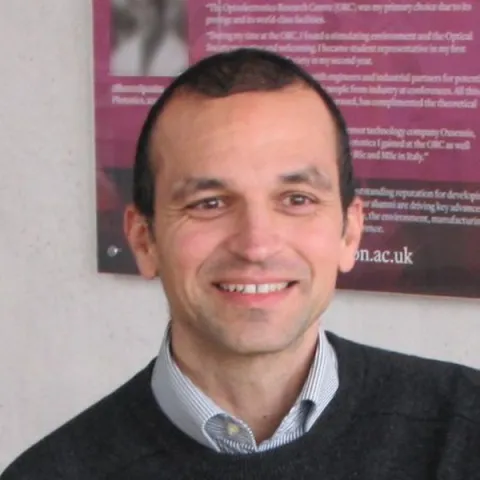About the project
This project will explore the radiation pressure of laser light, to levitate, guide and accelerate particles within novel hollow core fibres (HCFs), targeting both fundamental studies and new applications such as radiation sensing and hypervelocity particle acceleration.
The trapping and guidance of microscopic particles using the radiation pressure of light has been well known since the pioneering work of A. Ashkin in the 1970’s, which has led to several important applications including optical tweezers in biology.
In free space, the guiding range is typically limited to micrometre length scales due to the divergence of the trapping laser beam. In HCFs on the other hand, the laser beam remains tightly confined within the hollow core, and with recent progress in developing record-low loss HCFs at the ORC, it has become possible to guide microscopic particles within kilometre-long fibres. This may enable the realisation of “flying particle sensors” to achieve the remote detection of physical quantities such as electromagnetic fields or ionising radiation.
Furthermore, the inherent ‘radiation-hard’ light guidance of HCFs offers a unique advantage relative to normal glass-core fibres which are prone to the radiation-induced glass damage. Hence, HCFs may represent an innovative solution for remote sensing in extreme radiation environments such as nuclear reactors.
Another possible research direction in this project is micro-particle acceleration, combining the radiation pressure from high-power lasers and the long HCF acceleration lengths to potentially achieve hypervelocity particle propulsion. This work will explore the unique capability of hollow core fibres for kilowatt-class laser power transmission over kilometre-range distances, as recently demonstrated at the Optoelectronics Research Centre (ORC).
This project will be mainly experimental but will also include some numerical modelling. The project work will take place across several research groups, covering state-of-the-art high-power laser facilities and world-leading hollow-core fibre fabrication, allowing the candidate to collaborate with experienced researchers in various research areas.
You will be based at the Optoelectronics Research Centre (ORC) at the University of Southampton, a world-renowned institute for research in photonics and optoelectronics.
The Optoelectronics Research Centre is committed to promoting equality, diversity, and inclusivity, as demonstrated by the school’s Athena Swan award. We welcome all applicants regardless of their gender, ethnicity, disability, sexual orientation or age. We take personal circumstances into account, and will give full consideration to applicants seeking to study part time. The campus has onsite childcare facilities.
